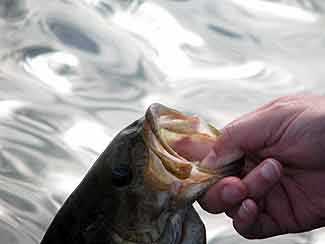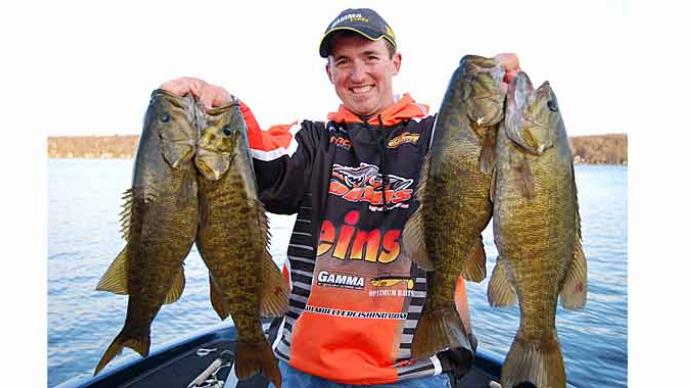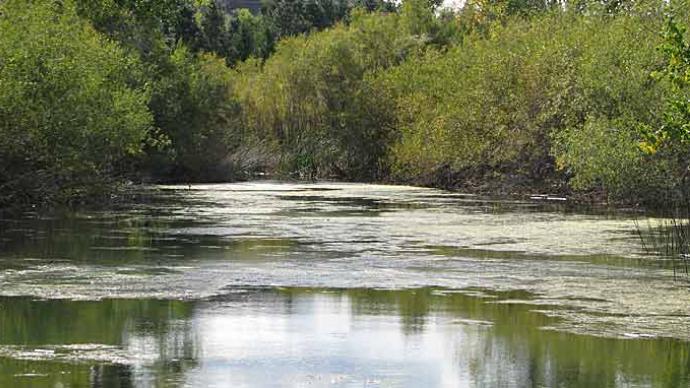
Too often in bass fishing we miss the forest in search of a tree. We focus on catching a bass, a singular entity. This bass is really a member of a complex ecosystem that includes landscape, predator, and prey. We hone in on what the bass is telling us and ignore all the other signals that a creature born in that landscape notices. Signals are all around, in our bodies absorbing the sun and the frogs croaking on the shore. Fortunately, if we open ourselves to the environment there are signs we can perceive from all aspects of the environment that will help us decode the behaviors of the animal we are really after, five bass by 3 p.m.
Beaver huts
A beaver never makes a hut on accident. It chooses a location for its dwelling based on the life sustaining features that are available nearby, on land and in the water. On land it is looking for cover, a food source, and quick access to water. In the water it wants a nearby source of deep water for safety, a structure that can support its hut, and a quick food source if possible. These are the same life-supporting features preferred by bass.
Imagine the last beaver hut you came across. It was probably located along a trough. The trough allows a beaver valuable depth and frame for his entrance and tends to be a quick roadway to deep-water safety. These are the same features bass relate to. Now mix in the hut itself as a giant piece of mangled cover, with insects and baitfish gathered nearby and it is a no brainer that bass would be located near beaver huts. This would have little use for a fisherman, except for the fact that a beaver hut is visible to the naked eye. It doesn’t take electronics or lake maps to find one. It is an easily identifiable feature and can be returned to without triangulation or waypoints. By keeping your eye out for beavers you can quickly determine if there is prime cover in your area that bass will relate to.
Birds diving from the sky
A bird diving out of the sky has one thing in mind, eating. It has similar predatory instincts in common with bass and will attack out of opportunity. These types of freshwater birds lack the ability to dive more than five to 10 feet. Diving birds reveal that baitfish are near the surface of the water.
While baitfish travel far and wide, often in very small pods, there are features of lakes and predatory fish that will force them into giant schools, which are easier to attack. Points, humps, current, wind, and ambushes from predators are the main reasons why baitfish form these large schools. When birds are diving into the water some combination of those factors has taken place and allowed the birds this chance.
The good news for you is you can see this from a distance, while driving or stationary, and adjust your course to intersect the activity. No gee wiz gizmos required. It is not a certainty that bass will be present, but it is a good bet that if birds have found this food source aquatic predators have already done so. Be careful not to get on top of the baitfish, your presence is another factor that can drive and push the school, sometimes toward safer water.
Loons
The loon is a bird that has developed the unique skill of diving to deeper depths to find its food. Loons are predators like bass and feed on similar food sources. It is common to see several loons in a tight area diving for baitfish or whatever it can find nearby. By watching loon activity you should be able to quickly determine if there is food present and where there is food there is often predatory fish. The difference to sky diving birds is that the loon is searching deeper. This will dictate that you fish deeper. Leave the topwater in the rod locker, turn on your graph, and figure out what depth is relevant to the feeding activity. Even if no fish are caught it can give the very important clue of what depth baitfish and predatory activity can be found. This should help all over the lake, even where birds are not present.
Hunting birds
For all of the same reasons birds around open water can be indicators of fish, shore birds on the hunt can be an indicator of shoreline activity. Their skills are honed for prowling the shoreline, often in cover like pencil reeds, and snatching anything that moves. Frogs, bluegill, fry, mice, and baitfish all hide in these areas seeking protection. While no bass fisherman is a stranger to shoreline grass, it can be difficult on lakes to determine a productive stretch amongst the miles of reeds or pads. This is where the birds come in.
Many times these birds are a bright contrast to the brown and green shorelines of lakes, and spotting one hunting tells you that there is some kind of activity in the area. A great stretch of grass will have factors that attract prey and predators, which are not always perceivable to fisherman, but are to birds. It could be lily pad size, density of vegetation, or bottom content that dictates this and you will have no way of keying in on it unless you read the birds. There will not always be a bass hunting near a hunting bird, but it is a safe bet that the best stretches of grass have birds hunting on them. If you see a crane high stepping through the reeds it is worth it to investigate that area for other predators that cannot be seen until they destroy your frog.
Croaking frogs
Next time you are near a stretch of shoreline grass simply listen. Of course you have been near a lake at 5 a.m. and heard the signs of crickets and frogs. Once the day starts, these sounds go away, right? Wrong. The day brings noises and mental stimuli that make it hard for us to hear what has always been there. Take a second and listen for frogs. You will hear them. You have put a piece of the puzzle in place.
If you can hear the frogs, then a bass will definitely hear. If you don’t hear croaking listen for smacking. This is sound of frogs clamping their jaws and smacking their heads amongst the thick pieces of grass, while chasing prey. Use this knowledge to understand that bass will go shallow, very shallow, and chase after forage that comes through its strike zone. If you are hearing nothing then bass are unlikely to be patrolling the muck you are around. If you can see a frog and match its size even better, the more realistic to the fish the better. Don’t worry too much about color though, as the bass is mostly silouetting it's food and reacting more than studying color. While this is not a perfect match, frog croak equals one fish; it is a great way to gauge prey and predator activity level in the area you are fishing.
Baitfish clues
If we take a second to stop casting and look around us it is amazing what we begin to perceive. Look around your boat to see if there are any floating shad or baitfish. You can even net the shad and study it in the boat. Look at the sides and try to determine what colors you see or how dark the back is. Is there a chartreuse line down the side and how does the reflected color change with the angle of the sun. These are features bass notice, but often fishermen do not.
How long is it or is it abnormally tall. Apply these observations to your lure selection. Even better would be to know the different species, goby vs. sculpin, threadfin vs. the other 29 species of shad, or the fact that blue-black herring can live as far north as Nova Scotia, you get the point. Know the differences so you can apply it to your fishing. Sometimes we take for granted that lure companies have done all the research that needs to be done and have supplied you with a singular tool for catching fish all over the country. This just isn’t true and your ability to key in on these differences can pay huge dividends on even tough fishing days.
Pinchers
What color are the pinchers of the crayfish in your home lake? If you don’t know look for the answer. The scientific community has databases of crayfish, complete with pictures and size ranges for many parts of the country. Some have blue claws and some are bright red, some have blue shells while other shells are red. There are limitless combinations of colors, based on insects, soil composition, and water clarity that can affect the coloration of a crayfish.
While simple brown works on days when fish are active, some days require an exact match to get a fish to bite. If you can’t find any scientific data on your home lake then go to the source. Walk the shoreline or beach the boat and search out some gravel or rocks. Turn them over and see what is there. You will be amazed at what you find. Beetles, nymphs, and crayfish all live together in these complex shoreline ecosystems. If you don’t have that type of structure grab a pile of grass and sift through it. Look for crayfish and other small animals then study the hole you left and see what swims out of the shadows. Matching crayfish or insect colorations for your lake can be the difference between a full livewell and one of those rare days where you wished you went to work.
Stomach contents
This one is not for everybody, but can be a useful tool in determining what bass are eating. After you catch a bass, assume this is not the first meal she tried to eat today. Look down her throat and see if anything is poking out. I’ve seen pinchers, antennae, and tails sticking out of their gullets; sometimes a whole crappie is there!
Take note on coloration, size or any other factor that you can use to hone in on the bass’ preferred forage. Odds are if you put her in the livewell you will get a better look at the bits and pieces in a few minutes. Now for the stomach. You don’t have to cut open a fish to see what it has been eating. Feel along the belly and search with your fingers for impressions and ridges. See if you can feel the outline of a baitfish and how big it is. Out west you can feel for the shape of a trout or maybe a giant crayfish with its tail tucked. The shells don’t fully break down in fishes’ stomachs so often times you can feel the tiny arms and pinchers long after they have been eaten. By paying attention to what the fish has recently eaten and you can put yourself in a good position to present that type of food to the other fish down there waiting for an easy meal.
It may seem counterintuitive, that finding animals that aren’t a bass can help you catch more bass, but ecosystems are not groups of independently acting species. All the animals are intertwined and biologically linked to cooperation and competition in an environment. Predators use opportunity and prey are forced to adjust to not one threat, but many threats.
Look for the signs of activity, read the colors and clues around you and do some research to see what the norms are for the environment you are fishing. Become one with nature around you because not only will you catch more bass, but you will also enjoy your time outside.



